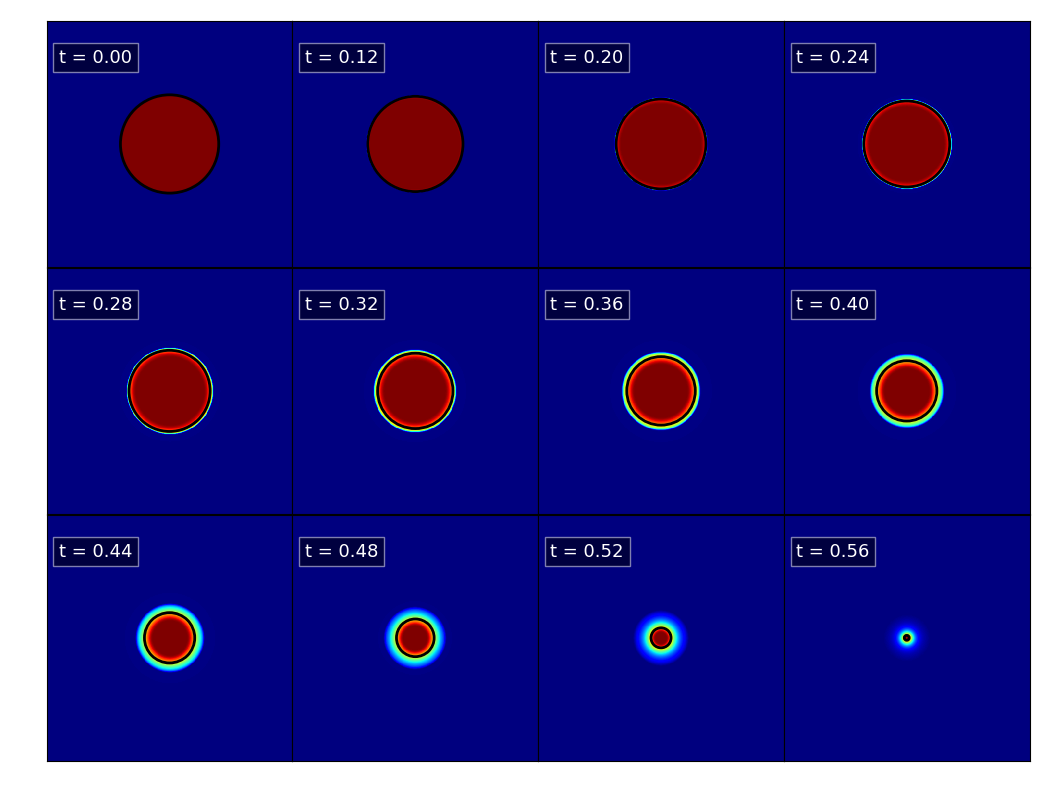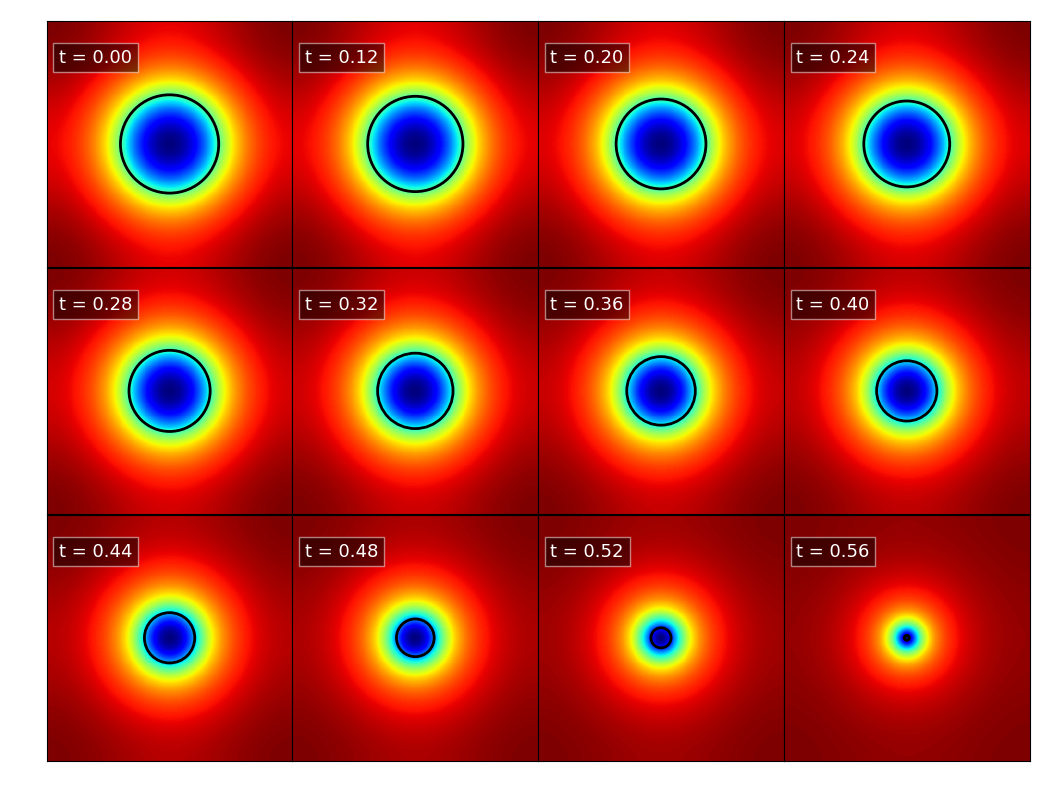Self Gravity: XSEDE report
In order to test the self-gravity implementation in CHOLLA, I ran a \(512^3\) adiabatic simulation of an ideal gas \((\gamma = 5/3)\) collapsing under it’s own gravity.
The box size is \(L=1\), the density in the box is \(\rho=0.1\) and for the spherical region of \(R < 0.2\) there is an over-density of \(\rho=1\). Initial velocities are uniform \(v=0\) and pressure is uniform \(p=0.001\).
The next figures show density and potential center slices. The black circle corresponds to the analytical value for the radius of a uniform pressure-less system collapsing only under gravity.
Density

Potential

Timing for several grid configurations
All times are in seconds and correspond to the average of the first 20 time-steps ( not counting the first two time-steps )
| nGPUs | nx | ny | nz | time_hydro | time_potential | time_boundaries |
|---|---|---|---|---|---|---|
| 8 | 256 | 256 | 256 | 0.613 | 0.689 | 0.275 |
| 16 | 512 | 256 | 256 | 0.691 | 0.762 | 0.339 |
| 32 | 512 | 512 | 256 | 0.818 | 1.513 | 0.939 |
| 64 | 512 | 512 | 512 | 0.869 | 1.972 | 1.361 |
| 128 | 1024 | 512 | 512 | 0.932 | 2.121 | 1.592 |
For the XSTREAM system there was no debug queue, this makes any development to be very tedious, and I wasn’t able to run more than 128 GPUs.
NOTE: This was the implementation of the poisson solver that wasn’t optimized for solving real-complex-real FFTs, also there was another optimization that avoided the last transposition for the forward FFT saving communication time.